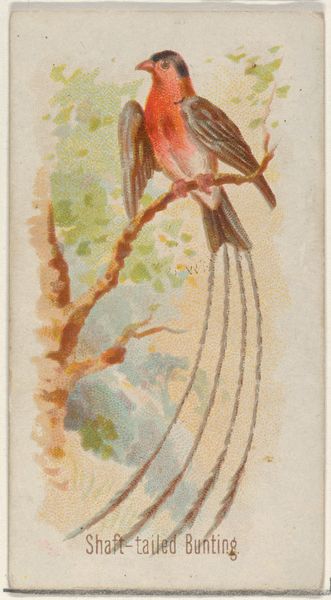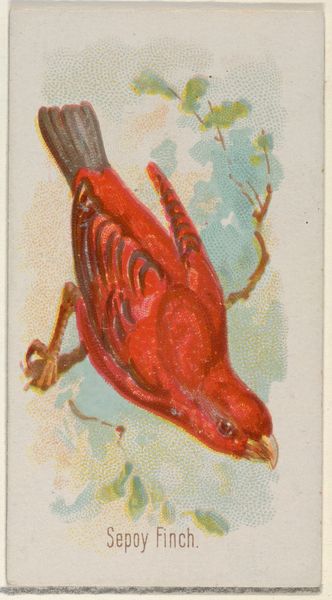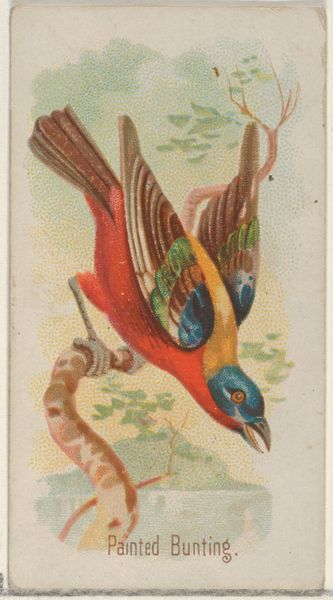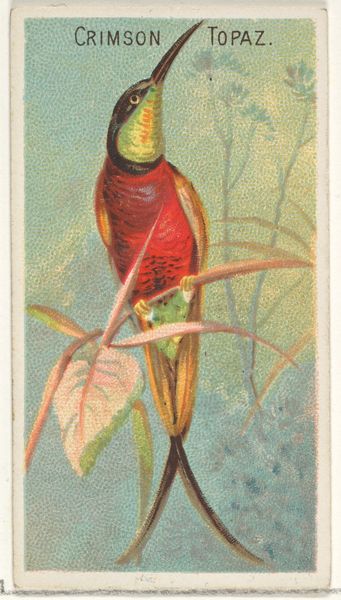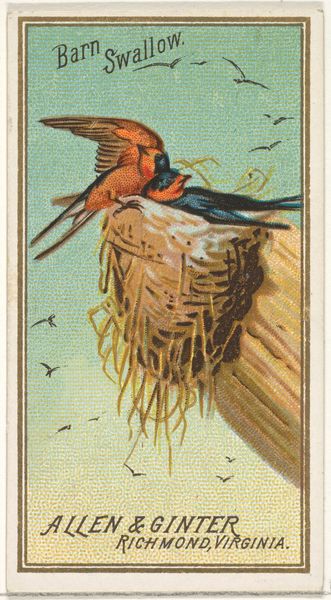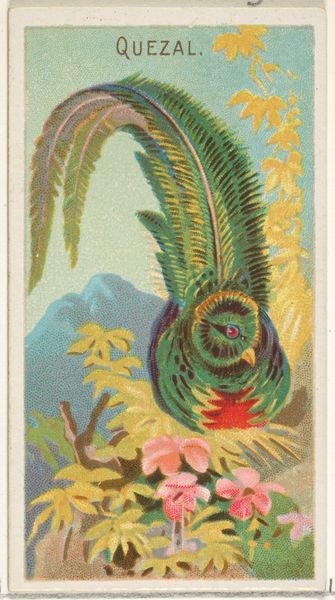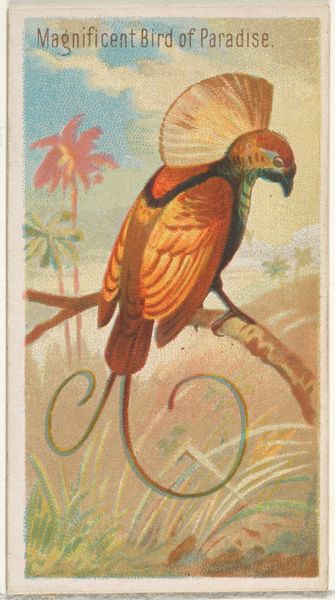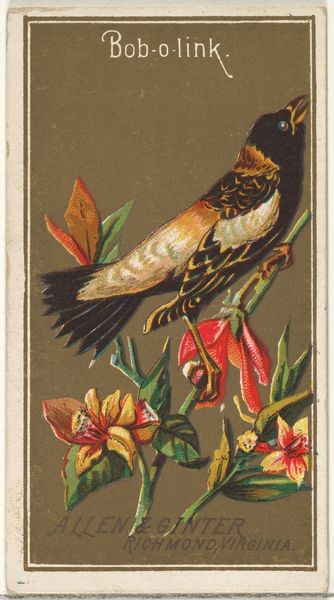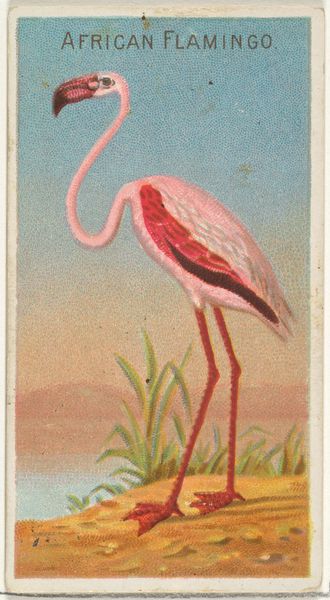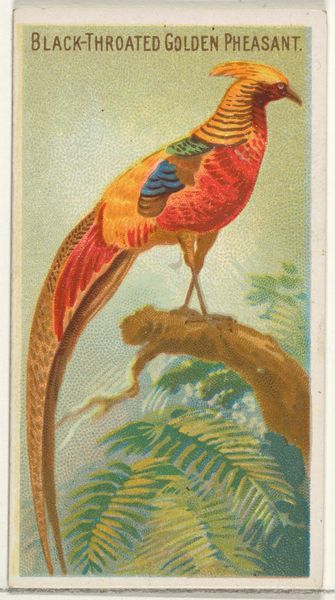
Red Bird of Paradise, from the Birds of the Tropics series (N5) for Allen & Ginter Cigarettes Brands 1889
0:00
0:00
# print
#
coloured pencil
Dimensions: Sheet: 2 3/4 x 1 1/2 in. (7 x 3.8 cm)
Copyright: Public Domain
Curator: This small but vibrant work is "Red Bird of Paradise," from the "Birds of the Tropics" series, created around 1889 by Allen & Ginter as promotional material for their cigarette brands. It's currently housed at the Metropolitan Museum of Art. Editor: It's incredible the way such bright colors pop from this little rectangle, especially the red in the bird's plumage. There's a kind of delicate detail to the drawing and print, considering it was essentially disposable advertising. Curator: Precisely! The images speak volumes about late 19th-century fascination with exoticism and consumer culture. Cigarette cards like these offered glimpses of the world, framing the brand within a larger narrative of exploration and sophistication. They were quite collectible. Editor: I’m curious about the method used to produce such detail at scale. I bet it involves layering coloured pencils onto the printed base? Think of the labor needed to generate the printing plates for this image, for each colour. Curator: Absolutely. Mass production enabled accessibility. Japonisme influenced the composition – the cropping, the flattening of perspective. They cleverly tapped into popular aesthetics of the time. The trade card format normalized global travel, albeit within a very constructed visual regime. Editor: It highlights the distance between reality and representation. That said, it also introduces exotic species, albeit on a tiny scale and intertwined with harmful commodity consumption. We consume and are in turn consumed. Curator: A point well taken! "Red Bird of Paradise," through its visual appeal, served both to sell a product and to cultivate a sense of worldly knowledge – linking nicotine, far off lands and desirable social status. Editor: Ultimately, its worth considering all of this artwork’s social connections through not only material labor but also as consumer culture, its layered construction revealing social hierarchies, values, and the reach of capitalism. Curator: Exactly! Thinking about these cards offers a revealing snapshot into the complex relationships between consumerism, global cultures, and image-making at the turn of the century. Editor: Yes. I like the challenge posed by unpacking complex colonial systems embedded in quotidian objects and in promotional printmaking itself. It seems so quaint from afar!
Comments
No comments
Be the first to comment and join the conversation on the ultimate creative platform.
